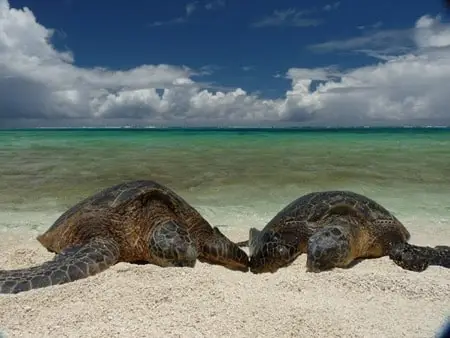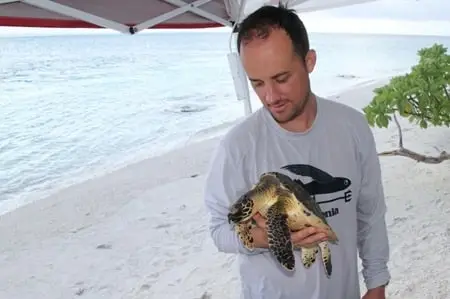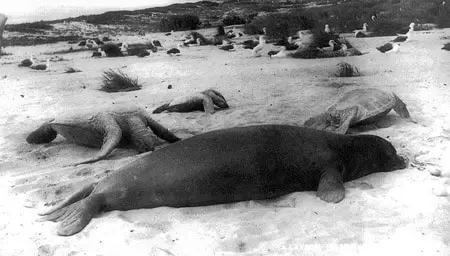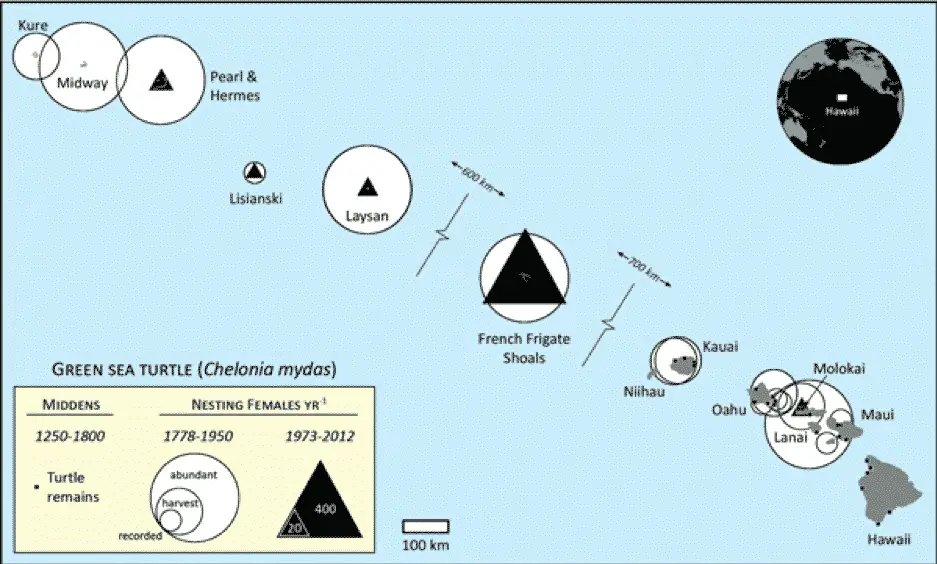Data Shows Limited Recovery for Hawaiian Sea Turtle


May 26, 2013
By Stuart Pimm
Historical Data Suggests Hawaiian Sea Turtle Recovery is Limited
Hawaii is famous for its tranquil beaches, surfing, and for pairing pineapple with pizza. But it is Hawaii’s green sea turtles that are one of the most popular tourist draws today.
Hundreds of thousands of tourists trek to Oahu’s North Shore every year to see these creatures haul out of the ocean to bask on the sand under the tropical sun.
The turtles seem so numerous today it is easy to forget that only a few decades ago most feared their extinction. The population had been harvested for food – like fish – by local residents and for a commercial fishery that targeted turtles. All harvests were banned in 1978, however, and surveys by NOAA scientists have documented a steady increase in nesting at one rookery ever since.
As a result of this rebound, some have called for the species to be removed from federal protection, de-listed as a threatened species, and for harvests to reopen.
A new study published in the journal Ecography, however, demonstrates that 80% of the historically major nesting sites for the population are extirpated or dramatically reduced and shows how this concentrates the risks posed by climate change.
The authors of this synthesis represented a diverse collaboration of ecologists, geographers, and historians – in what’s become known as the discipline of historical ecology.


Historical ecology is deceivingly simple.
Modern scientific data are chronologically limited, forcing scientists to look at proxies such as ice cores, sediments, or tree rings for long-term data sets. In historical ecology, researchers mine historical records for any information on the abundance, distribution, or demographics of wild populations.
Art, restaurant menus, ethnography, newspaper articles, and naval journals have all shown to be rich sources of information for species as diverse as Atlantic cod, African rhinos – and Hawaiian sea turtles.
I think most ecologists are fascinated by the idea of historical ecology. Who wouldn’t want to travel centuries back in time and see wild nature?” said study author Dr. Kyle Van Houtan, who leads NOAA’s Marine Turtle Assessment Program, based in Honolulu.
The question with historical observations has always been how they might be organized to inform conservation management today.”
Gaining Insights Before Exploitation
To answer that question, Dr. Van Houtan and his team scoured historical information in a host of museums, libraries, and Internet databases like Google Books and Project Gutenberg. They were rewarded with hundreds of historical accounts of sea turtles in Hawaii.
In Hawaii today, more than 90% of the green turtles nest on a low-lying coral atoll in the remote Northwestern Hawaiian Islands. However the study found nesting was significant and widespread across Hawaii, even a major nesting area on the island of Lanai that was hunted to oblivion shortly after World War I.
This historical perspective this study provides is important then for context for the recent decades. Many species on the U.S. Endangered Species Act were listed there in the 1970s, when their populations were at all-time historical low points.
According to Dr. Van Houtan, “the unprecedented modern population bottlenecks probably are not the basis for setting recovery targets, healthy populations are. This is where historical data are useful – to give insights before exploitation.”

The study appeared this week in the Early View at the journal Ecography. http://onlinelibrary.wiley.com/doi/10.1111/j.1600-0587.2013.00245.x/abstract
